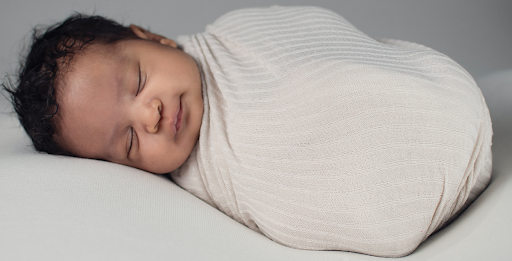Swaddling is a time-honored practice of wrapping a newborn in a blanket to provide a sense of security and comfort, similar to the environment of the womb. However, there are several myths surrounding swaddling that can cause confusion and concern for parents. From concerns about restricting a baby’s movement to causing skin irritation and overheating, many of these myths are not based on scientific evidence. By understanding the safe and effective ways for baby boy swaddle, parents can help their babies sleep soundly and feel comforted.
Myth: Swaddling restricts a baby’s movement and development
Busted: Swaddling, when done correctly, provides comfort and a sense of security to babies. It mimics the cozy environment of the womb and helps them sleep better. However, it is important to ensure that the swaddle is not too tight, allowing for some movement of the legs and hips. Babies should also have regular supervised tummy time when they are awake to promote development.
Myth: Swaddling causes hip dysplasia
Busted: Hip dysplasia is a condition where the hip joint is not properly aligned. Swaddling alone does not cause hip dysplasia. However, if swaddling is done incorrectly by wrapping the legs tightly and straight, it increases the risk of hip dysplasia, especially in babies who are already prone to the condition. The proper way to swaddle a baby boy is to allow for natural leg movement and positioning, with the legs slightly bent and the hips in a loose and relaxed position.
Myth: Swaddling increases the risk of Sudden Infant Death Syndrome (SIDS)
Busted: When swaddling, it is essential to follow safe sleep guidelines, such as
- placing the baby on their back,
- using a lightweight and breathable fabric,
- ensuring the swaddle is not too tight, and
- avoiding overheating.
Proper swaddling techniques actually reduce the risk of SIDS by promoting back sleeping and preventing loose bedding from covering the baby’s face.
Myth: Swaddling is only necessary for newborns
Busted: While swaddling is commonly associated with newborns, some babies find comfort in being swaddled beyond the newborn stage. Each baby is unique, and some continue to enjoy the security of swaddling until they start showing signs of rolling over or wanting more freedom of movement. It’s important to observe your baby’s cues and gradually transition them out of swaddling when they are ready.
Myth: Swaddling delays motor skills development
Busted: Swaddling does not inherently delay motor skills development. Babies develop motor skills at their own pace, and swaddling properly does not impede their progress. However, as babies grow and become more mobile, it is important to gradually transition them out of swaddling to allow for greater freedom of movement, exploration, and the development of gross motor skills.
Myth: Swaddling is only for fussy or colicky babies
Busted: While swaddling can help soothe fussy or colicky babies, it can also be helpful for any baby who is having difficulty settling down or staying asleep. It provides a sense of security and helps babies feel calm and relaxed. However, not all babies enjoy being swaddled, so it’s important to observe your baby’s cues and adjust the baby boy swaddle or try other calming techniques as needed.
Myth: Swaddling can cause skin irritation or other health problems
Busted: As long as the baby boy swaddle is made of a soft, breathable fabric and is not too tight, it should not cause any skin irritation or other health problems. However, if your baby has sensitive skin or a skin condition such as eczema, it is best to avoid swaddling. If you still want it then choose a fabric that is hypoallergenic or specifically designed for sensitive skin. Also, make sure to check your baby’s skin regularly for any signs of irritation or discomfort.
Final thoughts
Swaddling, when done with care and attention to the baby’s comfort and developmental needs, does not restrict movement or cause harm. As with any parenting practice, it is important to stay informed, follow safe sleep guidelines, and adapt swaddling techniques as your baby grows. Along with it, newborn mittens are also a good addition to your baby’s clothing. By doing so, you can create a nurturing and soothing environment for your baby’s healthy development.

